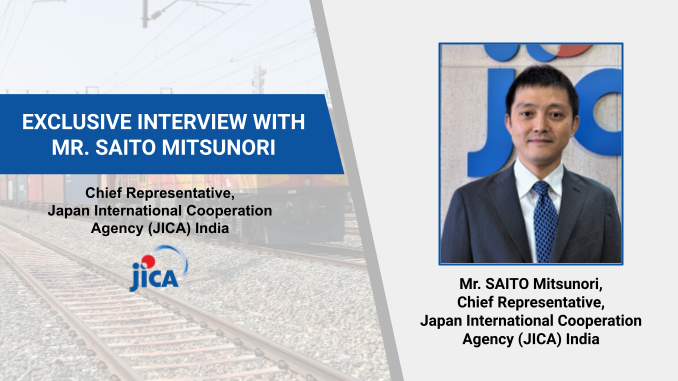
Interview Insights:
Rail Analysis: Please tell us about the progress of JICA’s projects in India and their achievements?
Mr. Saito Mitsunori: JICA and its predecessors have been operating in India since 1958, when the first ODA loan was extended for implementation of the Second Five-Year Plan. India was the first country in the world to receive Japanese ODA loan. Since then, Japan has committed over 7,300 billion Japanese Yen (approximately equivalent of 4,48,000 crore Rupees) for development across sectors in India.
“Today, JICA is India’s largest bilateral aid agency and India is JICA’s largest development partner (India is the largest recipient of JICA’s loan as well). JICA has also supported the country with technical cooperation projects, inviting over 8,400 people for training, dispatching more than 11,000 experts to offer their expertise and conduct various studies, or sending more than 240 volunteers.”
India is also a recipient of grant aid amounting 53 billion yen (3,200 crore Rupees) which has been utilized for constructing hospitals or iconic International Cooperation and Convention Centre in Varanasi. There have been key milestones in JICA’s cooperation in India.
This includes the first ODA loan mentioned above, the emergency loan to mitigate economic crisis in 1991, or loan commitments to develop Delhi Metro starting from 1997 which is considered the “shining example” of JICA’s assistance.
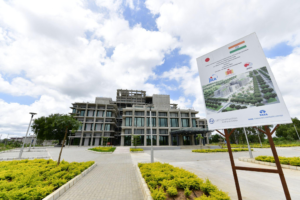
Rail Analysis: Is JICA also financing any new phases in Delhi Metro?
Mr. Saito Mitsunori: Yes. As of now, we are financing three priority corridors of the Delhi Metro Phase 4 and will also finance the remaining three corridors of this phase.
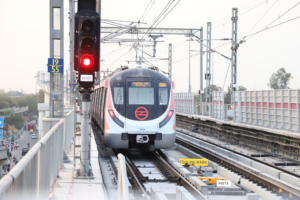
Rail Analysis: How far do you think that JICA has achieved the milestone of achieving better transportation in Indian Railways and metros, and what are the opportunities JICA has today to get further engaged with new projects? What are the targets set for 2023 for production of these products?
Mr. Saito Mitsunori: Japan has been contributing to India’s transport sector for about four decades now. JICA supports various aspects of transport, such as formulation of masterplan, assistance for the introduction of related technologies, construction of roads, bridges, railways, metros, and more.
Its major focus is on enhancing connectivity between areas in the country, rural as well as urban with safe, economical and environment friendly manner. The Western Dedicated Freight Corridor Project and metro projects in various cities are examples of major contributions to India’s transport infrastructure. Especially regarding metro, JICA facilitated construction for approx. 680 km of metro rail network across 6 cities (Delhi, Mumbai, Ahmedabad, Kolkata, Chennai, and Bangalore) including the phases under construction. Recently, Patna metro has been added as one of JICA assisted metro projects.
JICA has been supporting Executing Agencies for smooth implementation and timely completion of projects with relevant stakeholders. For instance, the first phase of the Delhi Metro development project was completed in 2005, two years and nine months ahead of the schedule.
This was made possible with the strong initiative and commitment of the Managing Director of DMRC, Mr. E. Sridharan to promote efficiency and the concept of “KOUKI” or the construction period. This was also made by the efforts of Japanese construction companies, suppliers, and Japanese consultants.
Through the construction of the first phase of Delhi Metro, the spirit of timely completion was embedded in Delhi Metro Rail Corporation (DMRC).
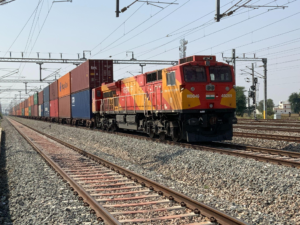
Rail Analysis: Tell us about your initiative regarding the Clean Energy Mission. What are the major steps JICA as a global organisation is going to adopt in India?
Mr. Saito Mitsunori: A strong and reliable energy infrastructure is essential for an economy to grow steadily. JICA has been supporting India’s energy projects since a long time ago. JICA has supported the installation of 12.9 GW energy capacity, with 8.1 GW in the renewable sector. The agency’s support on projects for modernization of transmission and distribution lines has also promoted energy efficiency in the country. JICA has supported transmission and distribution projects across Telangana, Andhra Pradesh, Haryana, Madhya Pradesh, Maharashtra, West Bengal, Meghalaya, Odisha, and Uttarakhand.
Besides ODA loans and grants, we have also appointed a JICA Energy Expert at the Central Electricity Authority (CEA) in November 2021. The primary goal is to support India, take ahead and achieve the targets set under the National Electricity Plan (NEP). We hope this technical cooperation will result in better energy optimisation and conservation in a sustainable manner.
As the world moves towards decarbonisation, India has stated a specific target of Net-Zero by 2070. In the medium term, it has also articulated a numerical target of 500 GW of renewable energy by 2030 and 50% of the installed capacity to be renewable sources. To meet these targets, the country is making effort towards Energy transition through the efficient use of energy with keeping the energy prices affordable in order to maintain economic growth. The main measures of Energy transition are the use of renewable energy such as solar and wind power of which India has huge potential.
Although the unit price of electricity from renewable energy has become cheaper, there are still challenges in meeting energy supply and demand and in ensuring a stable supply of electricity. As the output of these sources fluctuates depending on weather conditions, it is necessary to take actions to keep electricity supply stable by adjusting the output of conventional thermal and hydroelectric power generation.
Also, it is important to store the electricity generated by solar and wind power during times of surplus and discharge stored electricity when it is needed. Considering the circumstances and following Government of India’s policy, JICA is willing to offer various supports, for example, the development of a roadmap for the Energy transition towards 2070, assistance for the efficient use of energy, the stable supply of electricity under massive renewable energy and improvement of power quality contributing to economic growth.
In terms of the efficient use of energy, the support of the introduction of high-performance heat pumps and high-performance boilers should be considered. For the stable supply of electricity under massive renewable energy, the pumped storage, hydro power plant, green hydrogen as the energy storage and Battery Energy Storage System (BESS) will play a vital role.
“Green hydrogen would have the potential for co-firing at existing coal-fired power plants as well. Bioenergy and CCUS must be explored more for decarbonisation.”
The introduction of renewable energy is also cause for unstable frequency and voltage. Especially, in industry sector, stable frequency and voltage and reducing power interruptions are important factors that improve safety and productivity of industries. Access for the stable energy is the fundamental of people’s living and industries and India’s role is extremely important for decarbonization of the world.
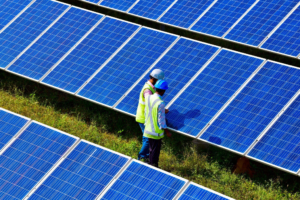
JICA will support various sectors to support India’s initiative towards stable energy access and decarbonization with all available schemes including Policy Lending, Two Step Loan, Project Loan, Technical Cooperation (including Capacity Building and Policy Advocacy) and PSIF (Private Sector Investment Finance).
Rail Analysis: What is the major planning of JICA for development across all sectors of India, including transportation, water and sanitation, energy, forestry, agriculture, health, and education?
Mr. Saito Mitsunori: JICA’s focus on support to India has shifted over the years in accordance with the changing needs of the country. For instance, from the 1970’s most of the ODA loans were utilized to develop fertilizer plants to support the growing agriculture sector. During the Seventh Five-Year Plan the support focused on establishing the economic infrastructure, such as power plants, in both urban and rural areas.
From the 1980’s the areas of support expanded to civil works, irrigation, forestry, or construction of road. JICA provided the first loan to the transport sector in 1982, and to the forestry sector in India in 1991. We also responded to the economic crisis of India in 1991, through an emergency loan to mitigate its impact.
The power sector became the major recipient of Japan’s ODA loan in the 1990’s. In the 2000s, JICA extended loans to projects in Bangalore and other metros, along with the Ganga Action Plan, and supported the capacity development of the manufacturing sector through technical cooperation.
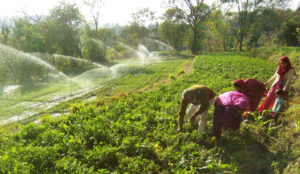
“To respond the global warming crisis or the global efforts to accomplish Sustainable Development Goals (SDGs) JICA signed an agreement with India to develop renewable energy sources or to support India’s policy actions on SDGs in the following decade. In recent years, our portfolio for ODA loans is focusing on sectors such as transportation, water and sanitation, agriculture, forestry, and health. With an emergency loan of 80 billion Japanese Yen (approximately 4,700 crore Indian Rupees) and emergency provision of oxygen concentrators, JICA supported India during the COVID-19 pandemic.”
In the future, JICA is going to consider renewable energy to support India’s initiative to supply electricity to the vulnerable segment of the society, and achieve net-zero emissions by 2070. The private sector is another area where JICA is increasing its cooperation. By funding infrastructure projects in the private sector, the agency could facilitate development of the country without increasing the debt level of the government. Currently, JICA’s investments projects focus on social impact, enabling financial inclusion, women empowerment, or affordable housing.
Rail Analysis: How is ODA becoming a preferable source of welfare funding to the developing countries by JICA and what is the total exposure of JICA in India?
Mr. Saito Mitsunori: ODA is broadly divided into bilateral aid, in which assistance is given directly to developing countries, and multilateral aid, which is provided through international organizations. JICA is engaged in activities under the former, bilateral aid, which is further categorized into grant (technical cooperation and grants) and finance and investment cooperation (ODA loans and private sector investment finance). For instance, ODA loans support developing countries by providing low-interest, long-term and concessional funds to finance development efforts of each country. As ODA loans require repayment, they promote efficient use of the borrowed funds and appropriate supervision of the project financed, which reinforce the ownership of the partner countries in the development process.
JICA places equal importance to this sense of ownership in technical cooperation, which supports human resource development, research and development, technology dissemination and the development of institutional frameworks essential for the development of economies and societies in developing countries. By customizing the content of cooperation for responding to the wide range of
needs with the partner companies JICA strives to enhance the capabilities of personnel to solve problems and nurture a sense of ownership.
Under such framework JICA has established itself as the largest bilateral donor agency to India. Our areas of operation include water and sanitation, transportation, private sector development, agriculture, and environmental conservation, among others, and the volume of assistance changes year to year. JICA signed loan agreements with the Government of India to provide ODA loans of up to a total of 467,487 million Japanese Yen during the Fiscal Year 2022. As discussed, earlier Japan has committed over 7,300 billion Japanese Yen (approximately equivalent of 4,48,000 crore Rupees) for development across sectors since the 1950s. Through promotion of mutual trust with the partner countries and sense of ownership JICA has also been able to operate throughout the world, with its offices in around 100 countries to implement projects that meet local needs.
Rail Analysis: Please tell us about the current progress status of the JICA’s projects in North-East India? Will they get constructed on the recent “G20 Principles for Quality Infrastructure Investment” of Japan?
Mr. Saito Mitsunori: We currently have 16 ongoing projects in Northeast India. Of these, 15 are ODA loan projects in road, water, sewerage, healthcare, forestry, and power sectors, including North-East Road connectivity project, which is the biggest in terms of financing. Developed with JICA’s financing in Bangladesh, this road will connect north-eastern states and the ports of Chattogram and Matarbari.
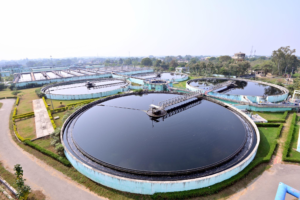
JICA place importance on building “Quality Infrastructure,” which has openness, transparency, long-term life-cycle cost competitiveness, and financial sustainability in its infrastructure investment. We are committed to making sure our work meets international standards including “G20 Principles for Quality Infrastructure Investment.”
For example, before making any investment decisions, we conduct extensive discussion and appraisal by working with counterpart agencies from the Government of India. In the process, we also review quantitative and qualitative socioeconomic indicators and set project targets. JICA and counterpart agencies agree on method of procurement and review financial implication of conducting such projects. Through these exercises, JICA aims to uphold the Principles for Quality Infrastructure Investment.
This Interview is a part of our latest Magazine: Subscribe to our Magazine Today!

